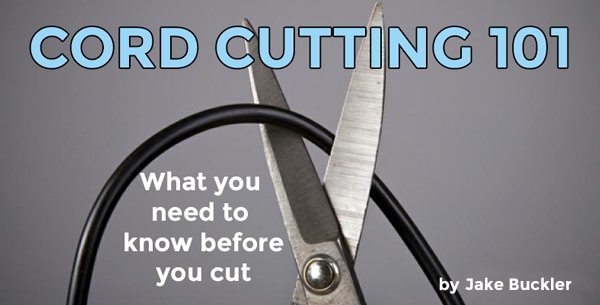As a new cord cutter, you might take the do-it-yourself approach to TV antenna installation. That’s great, but always remember to also take the extra time to ground your TV antenna.
You might not know that the National Electrical Code (NEC) requires every TV antenna to be grounded. Why? TV antennas that aren’t or are improperly grounded can lead to house fires from lightning strikes. Improper grounding also can cause lighting to enter your home! Avoid these risks by knowing how to ground a TV antenna then doing it.
Don’t Skip This Step!
You can get a great TV picture without grounding. Maybe this is why some do-it-yourselfers skip this step. That’s a HUGE risk! Lightning strikes destroy millions of dollars in property damage each year. You’ll avoided this simply by grounding your antenna. It’s easy. If you can run an antenna cable, you can run a ground wire. And doing this could be the most important change you make to your home theater system.
Note: grounding isn’t a magic solution for lightning protection, but it will help limit the damage caused by a direct lightning strike. When lightning strikes, it makes a connection with the closest possible metal object. For many of us, that’s the TV antenna on the roof. Giving that massive amount of electricity a place to dissipate – rather than having it travel through your home’s wiring – could save your home and your life.
How to Ground a TV Antenna
You can’t just tell it to go to its room. In electrical engineering, to “ground” something means creating a direct physical connection between an electrical circuit and the Earth. This helps prevent being shocked and limits the build-up of static electricity. In the case of a TV antenna, grounding prevents a lightning strike from jumping into your home’s electrical lines and starting a fire. In others words, it’s extremely important!
Before you start the grounding process, it’s ultra-important that you consult your local city or county office to get the laws regarding grounding in your area. No online resource will be as accurate as your local city hall planning office. Once you’re ready, you can ground your TV antenna by following these steps:
-
In most cases, No. 8 sheathed copper wire should be used. (Check your local ordinances.)
-
Attach one end of your grounding wire to your TV antenna mast.
-
Attach the wire to one of the mount bolts. (Scrape off paint or coating around the area you plan to connect to the mount. Attach the mast then re-coat the part of the mount where the coating was removed.)
-
Turn the ground wire toward the ground.
-
Use standard wire staples to secure the ground wire against the side of your house. (Note: Since it’s difficult for lightning to make a 90° turn, avoid making these or sharper angles with your ground wire.)
-
Connect the ground wire to a ground rod. Rather than pipes or plumbing fixtures, use an actual ground rod – a copper-coated steel rod driven at least three feet into the ground.
-
Use special clamps to connect the ground wire and ground rod.
-
Consult your local city and county ordinances for ground connection. In some areas, you can legally ground to a cold water pipe, while other areas require a ground rod. Use the specialized clamps.
-
Don’t create any splices or connections in the ground wire between the mast and the ground rod.
Do You Need an Antenna Discharge Unit?
Did you know that static electricity buildup can be just as dangerous to your home as lightning? TV antenna transmission lines can develop a buildup of static electricity that acts as a magnet for lightning strikes. Static discharge is a big concern in the southwest where humidity is low, and in northern areas where indoor heaters create low humidity in the winter. An antenna discharge unit decreases these risks. Your local licensed contractor, electrician, or your city planning office should be able to tell you if a static discharge unit is worth the time and money to install.
Congratulations on Grounding a TV Antenna!
Cord cutters who complete all of the steps outlined above will have successfully grounded their TV antennas. For a more detailed account of the grounding process and why it’s important, check out Solid Signal’s “A Guide to Grounding” white paper. We freely share this important information so cord-cutters can enjoy their TV viewing safely. We also carry a wide variety of grounding supplies to help you do the job right.





